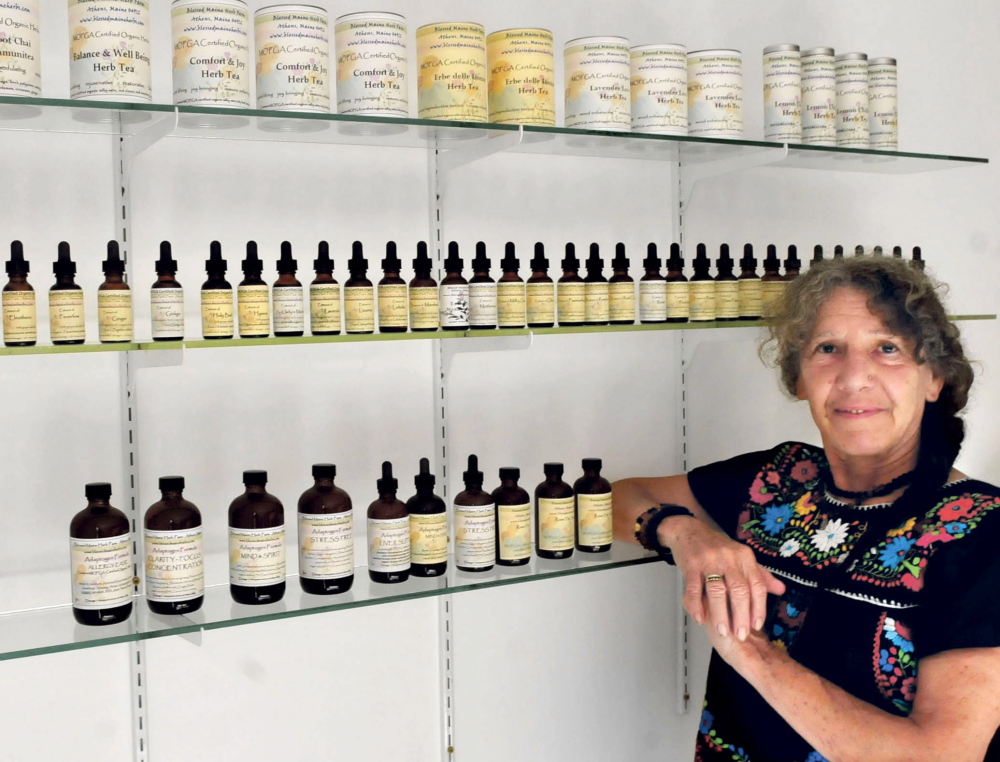SKOWHEGAN — Witch hazel, American ginseng, elderberry, black cohosh, shad bush and native roses are just a few of the 1,200 to 1,500 possible choices of native Maine plants for a park in front of the Bernard Langlais Indian sculpture.
The park, a 40-by-20-foot green space with granite steps, granite curbing and an engraved granite bench, is an extension of the $1 million municipal parking lot project, which began in May.
Jeff Hewett, Skowhegan’s director of economic and community development, said the $70,000 needed to repave the Indian parking lot, redirect some underground conduits and paint stripes for about 40 parking spaces will come from the original state grant funds for the revitalization of the lot.
Hewett said the Indian sculpture, which was restored and rededicated last month, is attracting a lot of attention. He said the new park will only enhance the experience.
“I don’t think there’s any question that we’ve seen a big increase in people that are showing up around town looking for the Indian and other stuff that go along with it,” Hewett said.
Included in the new park will be plants, flowers and trees that are indigenous to Maine and that were used for food and medicine by American Indian tribes as part of their daily life, said herbalist Gail Edwards, founder of Blessed Maine Herb Farm in West Athens.
A gathering is scheduled for 1 p.m. Sunday at the farm at 257 Chapman Ridge Road to discuss which plants would best be suited to the Indian park, Edwards said. The public is invited.
“It’s a meeting for anyone who’s interested in the native plants garden that’s going around the Indian,” Edwards said. “The idea of this part of the garden is, since it’s a native American Indian statue, the thinking was some beautiful native plants would call attention to a number of important issues honoring the native American, the indigenous people who lived here before us.”
Edwards said the list of plants will be broken down according to their original use and to which Indian tribes used which plants. The plants in the park also could be a destination where schoolchildren could learn about native plants and their uses while learning more about local Indian tribes, she said.
“There are wonderful lessons there about caretaking of the precious resources of the plants, many of which are now threatened or on watch lists because of loss of habitat,” she said. “A lot of education has to be done about the great importance of the native plants and to honor the native tradition. It’s a beautiful expression of the community’s diversity, not just the plants.”
Edwards said she and her family and students attending her herbal medicine classes at the farm’s schoolhouse will do the planting and maintain the gardens.
Dugan Murphy, executive director of Main Street Skowhegan, which is designing the park, said the group already has raised the $16,000 necessary to fund the project, which will include a cast stone walkway and small circular plaza for easy viewing of the Indian sculpture. A granite bench will be engraved in memory of Lawrence O. Sylvain, the local building contractor whose crew poured the massive concrete base of the Langlais sculpture and erected the 62-foot wooden Indian in 1969.
Murphy said some of the funding for the park came from Sylvain’s 1959 Skowhegan High School graduating class, which held a reunion this past summer. Sylvain’s brother Paul and his wife, Irene, also contributed to the park project.
Other donors include Cumberland Farms, a store that borders the Langlais Indian park; the Schwab Charitable fund, founded by Jay Cromarty, who went to Skowhegan High School and now lives in Boston; and Healthy Maine Streets, a physical activity initiative. Some of the Schwab fund money also is being used as seed money for a low-power radio station going in at the nearby Somerset Grist Mill.
Lynch Landscaping, of Skowhegan, is doing the work on the park. Murphy said plans for the park were already underway when Edwards approached him about including native plant species.
“She said she had access to people who could donate plant material, volunteers who would plant them and maintain them in the long term,” he said. “There’s an opportunity here for something that could be not only attractive but also educational and meaningful to the sculpture, because he represents an Abenaki fisherman and this garden will be full of plants that Abenaki people would have used for medicinal and edible purposes.”
Murphy said some of the work will begin next week before the town paves the parking lot. The garden will go in sometime next spring.
Doug Harlow — 612-2367
Twitter: @Doug_Harlow
Send questions/comments to the editors.




Success. Please wait for the page to reload. If the page does not reload within 5 seconds, please refresh the page.
Enter your email and password to access comments.
Hi, to comment on stories you must . This profile is in addition to your subscription and website login.
Already have a commenting profile? .
Invalid username/password.
Please check your email to confirm and complete your registration.
Only subscribers are eligible to post comments. Please subscribe or login first for digital access. Here’s why.
Use the form below to reset your password. When you've submitted your account email, we will send an email with a reset code.